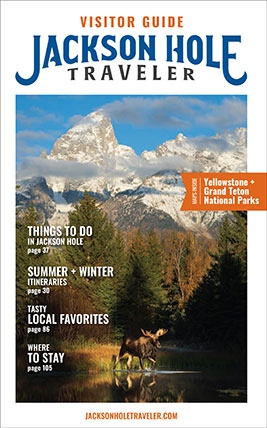Jackson Hole History is deep and storied and fascinating.
When most people think of the history of Jackson Hole, names like John Colter, Nick Wilson, William Sublette and David E. Jackson come to mind. Although these men and many others played an instrumental role in the settlement of of this valley, they were by no means the first to explore, or perhaps even to live in, this rugged region.
Before the settlers and fur trappers came to the Rocky Mountain, Native American tribes made an annual migration through the surrounding mountains to hunt this wildlife-rich area. The Crow, Gros Ventre, Blackfeet, Nez Perce, Bannock, Eastern Shoshone, and Sheep Eaters tribes all made recorded journeys into Jackson Hole. Indications of their presence may still be found in places like Mosquito Creek, Blacktail Butte and on the shores of Jackson Lake.
It appears the Sheep Eaters were the only year-round inhabitants of the wider area before fur trappers arrived around 1810, and the only tribe to actually spend winters at these higher elevations. As their name suggest , the Sheep Eaters lived off the Rocky Mountain bighorn sheep that spent their winters gazing south-facing slopes in rocky areas.
The Sheep Eaters greatly impressed the early fur trappers, like Osborne Russell, with their graciousness and dignity. Russell later wrote of his travels through this area in the 1830s, noting "...the Native Americans were all neatly clothed in dressed deer and sheep skins of the best quality and seemed to be perfectly content and happy. We obtained a large number of elk, deer and sheep skins from them of the finest quality... They would throw the skins at our feet and say, 'Give us whatever you please for them and we are satisfied.' We can get plenty of skins but we do not often see Tibuboes (Or People of the Sun)... I almost wished I could spend the remainder of my days in a place like this where happiness and contentment seemed to reign in wild romantic splendor surrounded by majestic battlements which seemed to support the heavens and shut out all hostile intruders."
Later on the anthropologist speculated that the Sheep Eaters lived in these harsh, resource-poor areas because stronger, more numerous and powerful Indian tribes drove them away, back into the mountains, away from better habitats.
Era of the Mountain Men
The era of the mountain men opened in 1807 when John Colter left Lewis and Clark's expedition to join Illinois hunters Forrest Hannock and Joseph Dickson on a trapping expedition through the unexplored West. After spending the winter trapping and hunting in the area surrounding Jackson Hole, Colter headed to the East where he met fellow trapper Manuel Lisa. Lisa persuaded Colter to join him in the founding of a fur trading business in the Rocky Mountains.
Colter's responsibility was to establish fur trading relations with the surrounding Native American tribes, but what he encountered when he entered the valley at the base of the Tetons, now known as Jackson Hole, was empty wilderness. All the tribes had moved to their winter homes at lower elevations where less snow and more game provided more favorable living conditions. Colter then explored the other side of Teton Pass, now known as Idaho's Teton Basin. For the next three years, Colter trapped and explored the Rocky Mountain Northwest until 1810 when he finally returned to St. Louis, the nearest western outpost hundreds of miles away.
In 1822, Jedediah Smith, Jim Bridger, William Sublette and David E. Jackson joined William H. Ashley and Major Andrew Henry on an expedition to follow the Missouri River to its source in southwestern Montana on the northern edge of what is now Yellowstone National Park. At the end of this expedition, Smith took six trappers into Teton Valley to spend the winters trapping. During the next year, Jim Bridger and Thomas Fitzpatrick led an additional 30 trappers into Teton Valley where the Rocky Mountain Fur Company was now in full swing.
Jackson remained in the mountains for the next few years. He and partners William Sublette and Jedediah Smith purchased the Rocky Mountain Fur Company in 1826. Jackson continued trapping in and around Jackson Hole until the partners sold their company in 1830. Jackson then left the mountains for Santa Fe, New Mexico, finally returning to St. Louis in 1832. His visits to this area are commemorated by the town and valley's name.
Jackson Hole Settlers
For the next 45 years the area was virtually deserted by the white man until in 1872, the Hayden Survey of the Yellowstone country came through, naming many of the region's geographic features.
You can discover scads of more information on Jackson's history at the Jackson Hole History Museum which is now housed in a brand-new building on Broadway on the historic Van Vleck Block. The museum features a collection of more than 7,200 artifacts, two historic log cabins and the ability to explore 11,000+ years of human history in Jackson Hole in the Main Gallery through text, artifacts, video, pull-out drawers for touchable items, and interactive kiosks.

